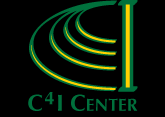
MENU
Symposium 2013 Home
Registration
2013 Agenda
Venue & Local Info
C4I
Home
GMU C4I Center-AFCEA Symposium
May 21-22, 2013
SESSION 4: Interoperability Technologies
_____________________
Data Standards For Data Interoperability
Dr. Scott Renner
MITRE
May 22, 2013 10:30
ABSTRACT
The DoD Net-Centric Data Strategy (NCDS) is about providing the right information to the right decider at the right time and place, by making the enterprise's data visible, accessible, understandable, trusted, and interoperable. Data standards are an important part of the NCDS goals of data understanding and data interoperability. This presentation will describe recent policy and technology developments within the DoD, including the rise and fall of the Universal Core (UCore) data standard, and the DoD's adoption of the National Information Exchange Model (NIEM) as the basis of its data sharing strategy.
BIO
_____________________
Cursor on Target: a Low-cost Enabler for System Integration
Mr. Jon Jacoby
MITRE
May 22, 2013 at 10:30
ABSTRACT
Cursor on Target is a simple what-where-when set of schema that is used in Combat Operations throughout the world 24x7.
BIO
JON JACOBY is a Principle Engineer for the MITRE Corporation, a Federally-Funded Research and Development Company (FFRDC). His professional career started as an officer in the Army after his graduation with a Bachelor of Science from West Point; he also holds a Masters in Systems Engineering from Johns Hopkins University. His work history includes Manufacturing Engineer, System Engineer, Software Engineer, Program Manager, Intelligence Officer, and CEO of a consulting company His hobbies include bicycling, kayak fishing, and housebreaking the new puppy.
_____________________
New Approaches to Tactical C2 Interoperability: Apps vs. Data

Dr. Michael Hieb
C4I Center, GMU
May 22, 2013 at 10:30
ABSTRACT
Current technology trends are moving towards development of "Apps" (as in Mobile Applications). This diverges from the trend in the DoD C2 Communities of developing Common Data for Interoperability. This presentation highlights C2 trends in the US Army from the Army Battle Command Systems (using formatted messages for interoperability) to Command Post of the Future (developing collaboration) to Command Web (based on a Mobile Application paradigm). The more inclusive approach to C2 development of Command Web is compared to other interoperability approaches.
BIO
MICHAEL HIEB is a Research Associate Professor at George Mason University's Center for Excellence in Command, Control, Communications, Computers and Intelligence (C4I Center) and a Technical Director for the Army's Simulation to C4I Overarching IPT (SIMCI OIPT). From 1997 to present Dr. Hieb worked to integrate simulation technologies into Command and Control of Military Organizations as well as Civil and Non Governmental Organizations. This has involved both NATO and IEEE working groups and has spanned the fields of Computer Science, Networking, Semantics, and Computational Linguistics. Dr. Hieb has over 100 Publications and has presented his research on Command Intent to many international C2 Forums. Dr. Hieb has been the Principle Investigator for multiple projects at the C4I Center, including major research with the Army Geospatial Center called Geospatial Battle Management Language (GeoBML). He received his PhD in Information Technology from George Mason University in 1996, a MS in Artificial Intelligence & Human Factors from George Washington University and a BS in Nuclear Engineering from UC Santa Barbara.
_____________________
